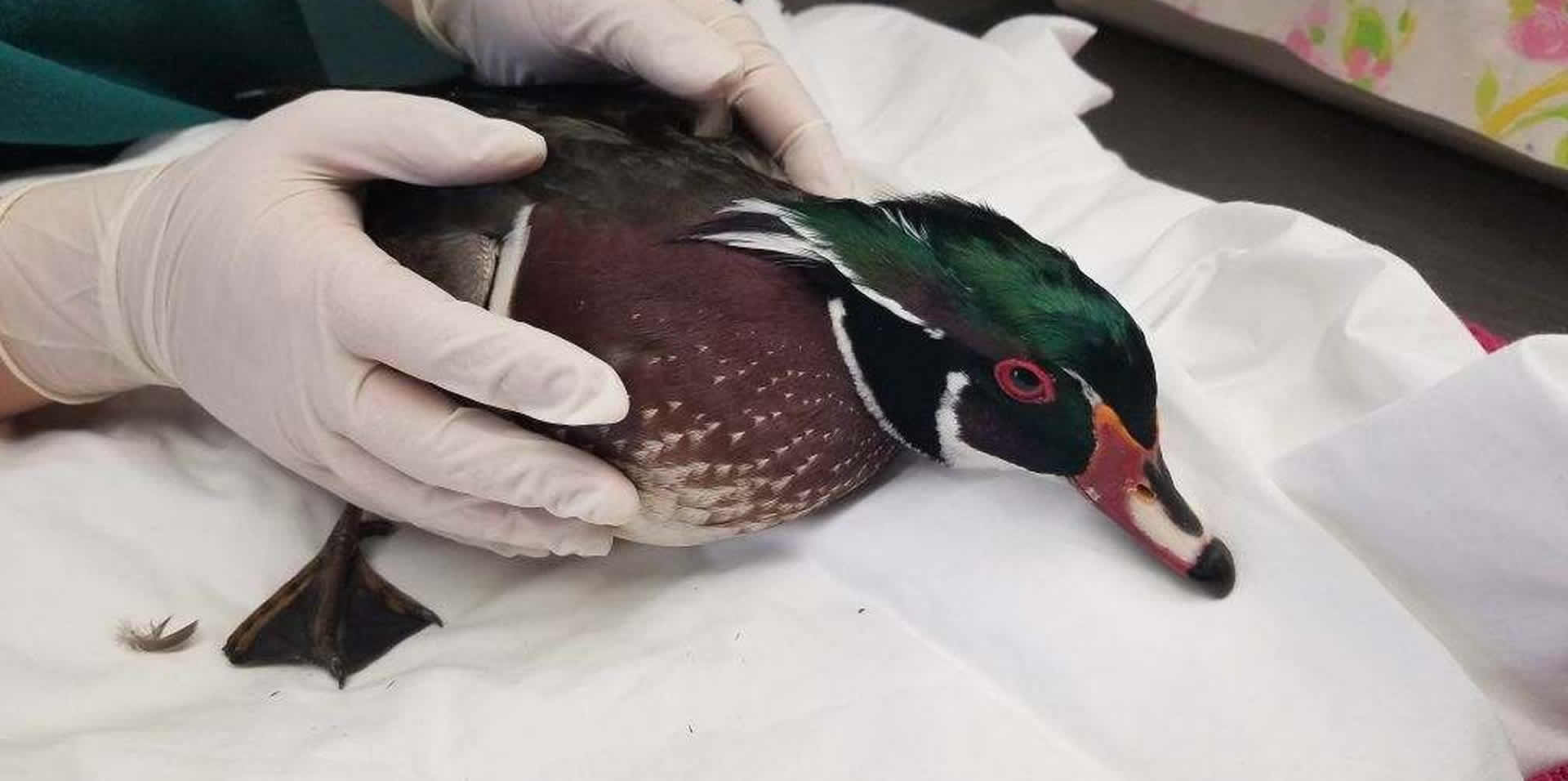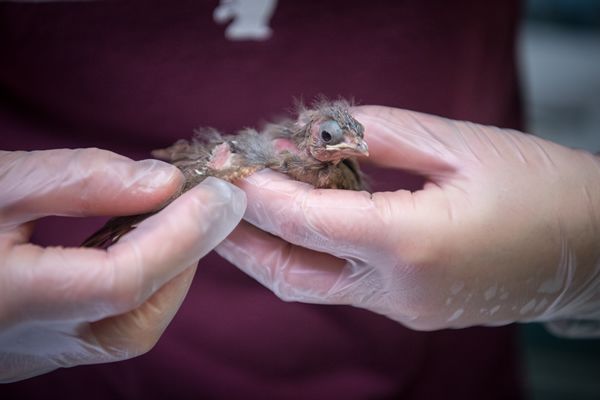
Any animal with visible injuries and/or bleeding.
Any animal that has been attacked by another animal, especially a cat.
Any animal that has been struck by a car, lawnmower, construction equipment, etc.
Any animal that is swarming with flies and/or ants.
Cold or injured young that have fallen from their nest or are lying out in the open.
Birds that have flown into a window and remained stunned or unable to fly after an hour.
Any animal tangled in netting, fishing line, or stuck in a glue trap. DO NOT ATTEMPT TO FREE THE ANIMAL FROM A GLUE TRAP. Cover any exposed area of the glue trap with paper towels and bring it to Second Chance with the animal still on the trap.
Any lone duckling or gosling. Use extreme caution, note the location and any other behavior, and call Second Chance or your local Animal Services division as soon as possible. Or, for a list of other licensed wildlife rehabbers in Maryland, click this link to the Maryland Department of Natural Resources:
https://dnr.maryland.gov/wildlife/pages/ plants_wildlife/rehabilitators.aspx
Animals that are approaching/following people or pets.

Healthy fledglings – most of our native songbirds leave the nest before they are fully flighted, learning to fly from the ground while still be tending by their parents.
Re-nestable young – if a songbird has fallen from its nest and seems uninjured, try to put it back into its nest. It is not true that a mother bird will reject a baby held by a human.
Uninjured baby rabbit – Mother rabbits only visit the nest about twice a day and it is possible you might never see the mother at all – particularly if she is doing her job well (staying hidden from predators and not attracting predators to the nest). If you are very concerned, quietly approach the nest and look at the kits from above to see if they look nice and round in their middle. Kits whose sides look sunken in or that have very prominent hip bones may need intervention. Sending in a picture to our email (info@scwc.org) and calling for further advice is recommended.
Uninjured juvenile rabbits – Weaned rabbit kits are very small, about the size of a tennis ball, and are likely to freeze at your approach. If they appear uninjured, they can be left alone.
Uninjured deer fawn – Does will leave their young fawns in a quiet spot for most of the day while she grazes nearby; the fawns will not flee from your approach. If there are no injuries or insects, they can be left alone.
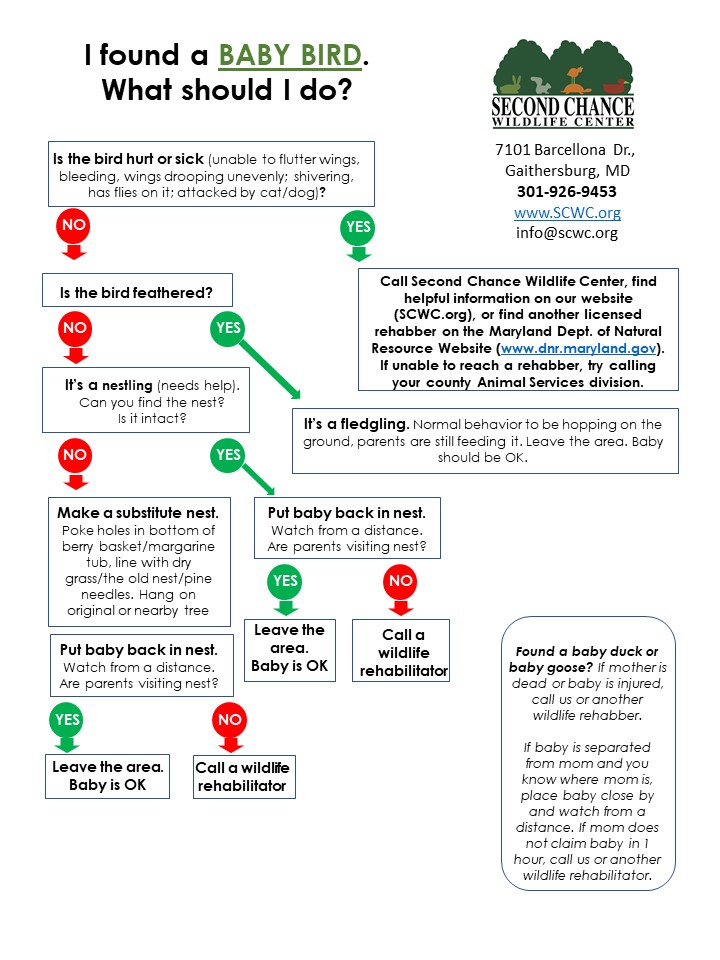
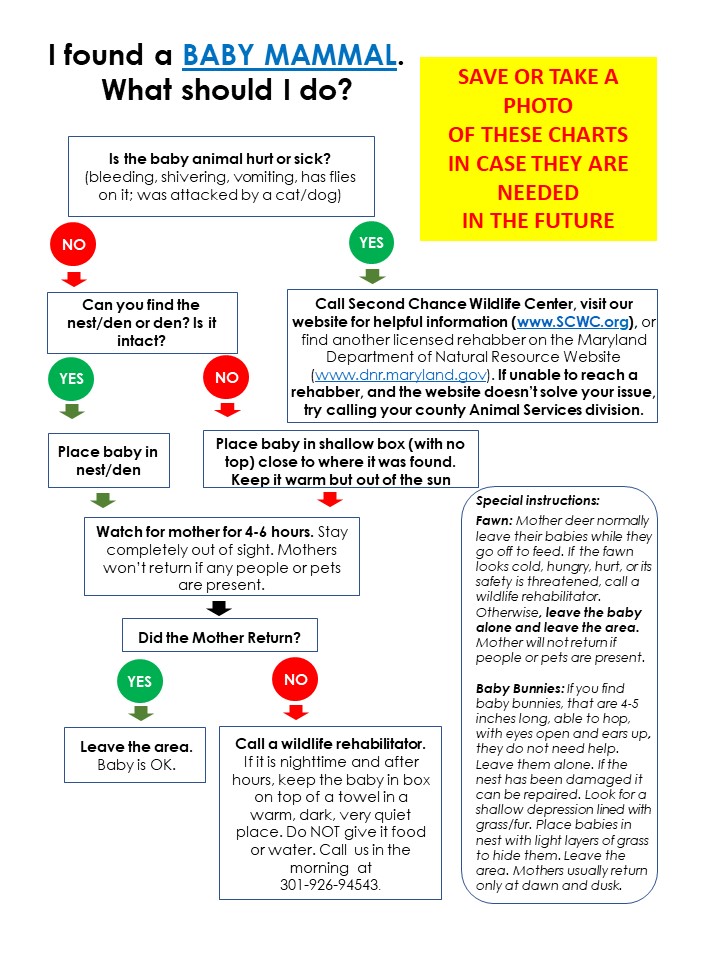
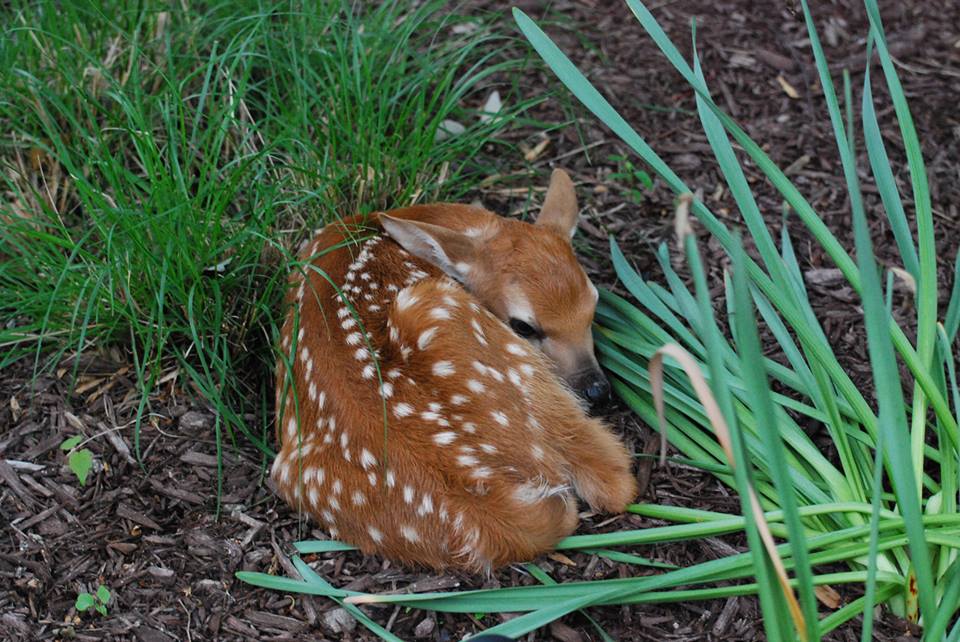
The Maryland Department of Natural Resources cautions anyone who encounters a fawn to avoid disturbing it and resist the urge to feed or handle the animal. Removing deer from the wild and keeping them in captivity is against the law in Maryland, for both animal welfare and public safety. Mother deer often leave their babies in a hiding place while she goes off to eat. Stay away, be quiet, and observe. Mom will usually return in a few hours. When in doubt call us at 301-926-9453.
Watch this video to learn what to do if you come across a rabbit’s nest.

on Invasive Species:
Like many others concerned about balanced ecosystems and wildlife conservation, Second Chance Wildlife Center focuses its limited resources on species native to our area or migratory birds that travel through here on a regular basis. Invasive/non-indigenous species compete for food and shelter with species meant to thrive in our state and contribute to it in some way.
The following birds are considered invasive/non-indigenous species. Residents finding any of these birds that appear to be in need of care, should consult the Maryland Department of Natural Resources website to locate and contact rehabilitators who do provide care for these species (http://dnr.maryland.gov/wildlife/Pages/ plants_wildlife/rehabilitators.aspx) or the Maryland Wildlife Rehabilitators Association directory (http://mwrawildlife.org/referral-directory/):
- European Starlings
- House Sparrows (also known as English Sparrows)
- Rock Pigeons
Also, Second Chance Wildlife Center does not rehabilitate exotic pets, mice or rats, red-eared sliders, or any domestic waterfowl or farm animals.


